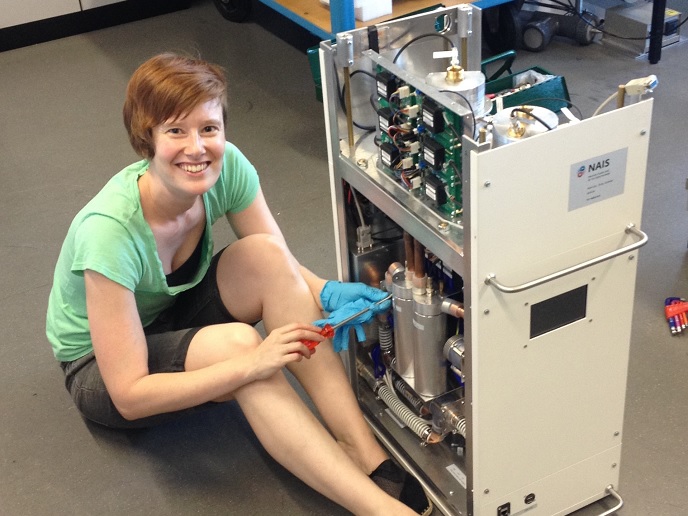Catching up with nanoCAVa: From Finland to across the world, innovative research on the climate effects of aerosols goes global
The nanoCAVa project aimed to advance current understanding of the fine line between the gas and condensed phases of aerosols by studying the formation of nanoscale clusters from atmospheric vapours. Thanks to recent breakthroughs in instruments able to detect atmospheric clusters and recently formed aerosol particles, Lehtipalo and her team were able to measure clusters in the atmosphere and study their formation process in the CLOUD chamber at CERN.
From CERN to worldwide
Following the CERN experiments, Lehtipalo and her team at the University of Helsinki have been exploring if the same mechanism works in the atmosphere using field data measured in different parts of the world. “For example, we have been looking at vertical variation of the smallest aerosol nanoparticles in the atmosphere using measurements onboard a small aircraft,” she comments. “We have also been studying more polluted atmospheres in the laboratory and conducted measurements, for example in China, to understand the connection between particle formation and air pollution.” Whilst their research has taken a distinctive global flavour, the team have still made good use of the CLOUD chamber at CERN, focusing on understanding aerosol formation in two completely new environments: the marine boundary layer and polluted megacities.
Marie Skłodowska-Curie: A vital step in a promising scientific career
Since the end of her fellowship, Lehtipalo has become an associate professor at the University of Helsinki and the Finnish Meterological Institute. “I work especially with the measurements and data from the ACTRIS infrastructure (Aerosol, Clouds and Trace Gases Research Infrastructure), which aims to harmonise long-term measurements of aerosols and reactive trace gases across Europe,” she explains. Her team is especially interested in including the measurements of the smallest nanoparticles into ACTRIS. This still requires a lot of work in developing the methods, but they hope to gain many new high-quality observations in future. “EU funding was critical for the project’s success,” concludes Lehtipalo. “It made it possible for me to take part in large experiments and exciting field campaigns. All in all, EU funding had a decisive role in the fact that I’m undertaking a career in science.”
Countries
Finland



